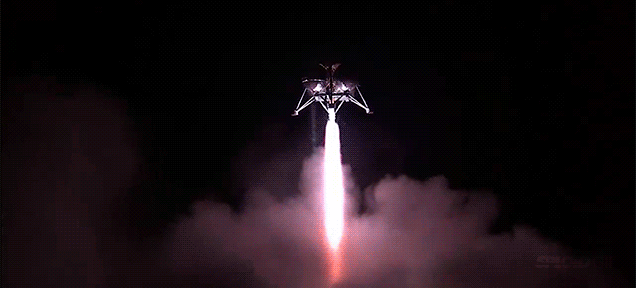Morpheus — the otherworldly NASA’s autonomous rocket lander — has been able to land in complete darkness on a rugged terrain using its Autonomous Landing Hazard Avoidance Technology. The resulting video looks beautiful, like a sequence from a sci-fi movie.
NASA demonstrated that it can land an unmanned spacecraft on a rugged planetary surface in the pitch dark in a May 28, 2014 free-flight test of the Morpheus prototype lander and Autonomous Landing Hazard Avoidance Technology, or ALHAT. The 98-second test began at 10:02 p.m. EDT, with the Morpheus lander launching from the ground over a flame trench and ascending more than 800 feet (244 m) into the dark Florida sky at Kennedy Space Center using only ALHAT’s Hazard Detection System for guidance. The Hazard Detection System, assisted by three light detection and ranging (lidar) sensors, located obstacles — such as rocks and craters — and safely landed on the lunar-like hazard field a quarter mile away from the NASA Center.
Between this and the Space Dragon V2 news yesterday, it’s been a great week for autonomous spacecraft landing systems.
